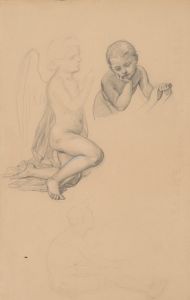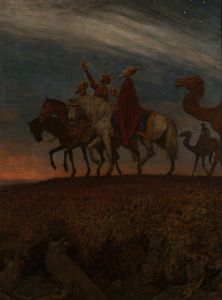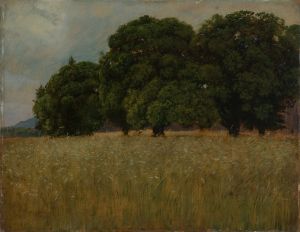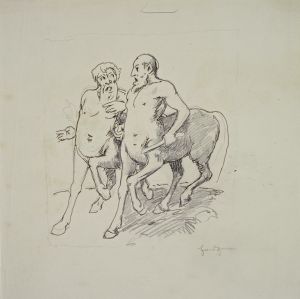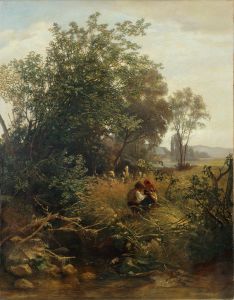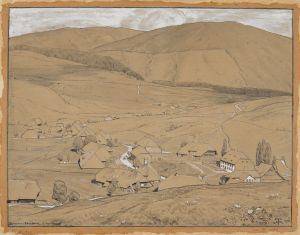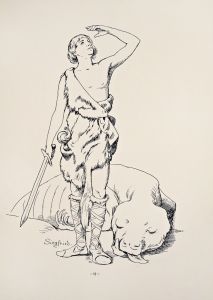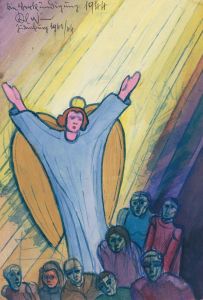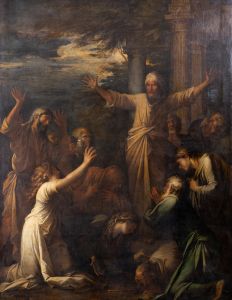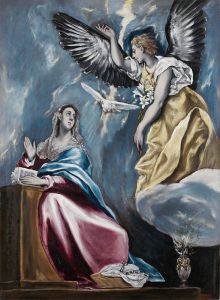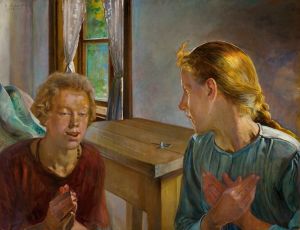
Angels – Annunciation
A hand-painted replica of Hans Thoma’s masterpiece Angels – Annunciation, meticulously crafted by professional artists to capture the true essence of the original. Each piece is created with museum-quality canvas and rare mineral pigments, carefully painted by experienced artists with delicate brushstrokes and rich, layered colors to perfectly recreate the texture of the original artwork. Unlike machine-printed reproductions, this hand-painted version brings the painting to life, infused with the artist’s emotions and skill in every stroke. Whether for personal collection or home decoration, it instantly elevates the artistic atmosphere of any space.
Hans Thoma (1839–1924) was a German painter associated with the late Romantic and early Symbolist movements. One of his notable works, Angels – Annunciation, reflects his characteristic style, which often combined religious themes with a sense of simplicity and emotional depth. The painting depicts the biblical scene of the Annunciation, where the angel Gabriel announces to the Virgin Mary that she will conceive and give birth to Jesus Christ.
Thoma's interpretation of this scene is marked by a serene and contemplative atmosphere. The composition is relatively straightforward, focusing on the interaction between the angel and Mary. The figures are rendered with a sense of clarity and calmness, which is typical of Thoma's approach to religious subjects. His use of light and color creates a harmonious and peaceful mood, emphasizing the spiritual significance of the moment.
Hans Thoma was known for blending traditional religious iconography with his own unique artistic sensibilities. While he was influenced by earlier German masters such as Albrecht Dürer, his work also reflects the stylistic transitions of the 19th century, moving away from strict academic realism toward a more personal and symbolic expression. Angels – Annunciation is an example of how Thoma sought to make religious themes accessible and emotionally resonant for his audience.
The painting is housed in a public collection, though specific details about its current location or provenance are not widely documented. Thoma's works, including this piece, continue to be appreciated for their ability to convey profound spiritual themes through a lens of simplicity and human connection.
This artwork is part of Thoma's broader oeuvre, which includes landscapes, portraits, and other religious scenes. His work remains an important example of 19th-century German art, bridging the gap between Romanticism and the emerging Symbolist movement.





